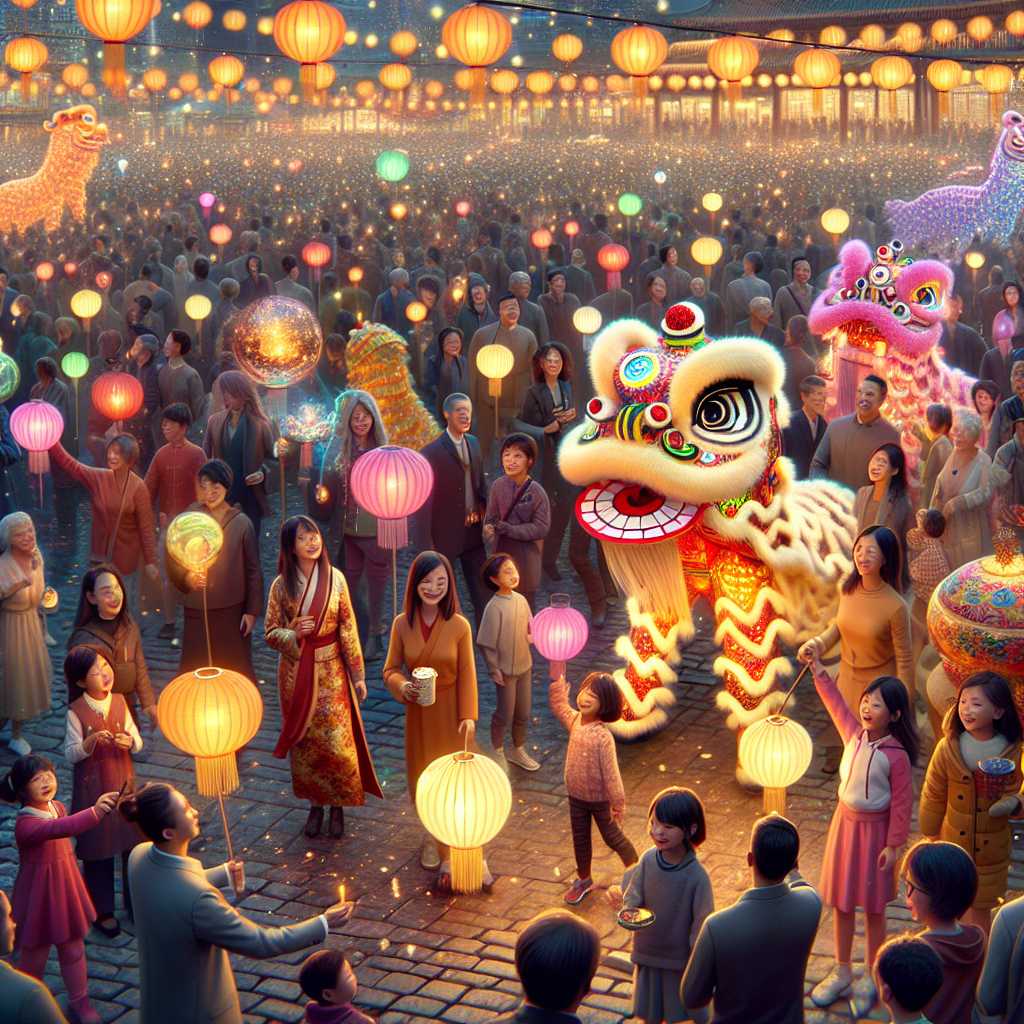Understanding the Lantern Festival: Origins, Celebrations, and Significance
The Lantern Festival, also known as Yuan Xiao Jie, is a significant event that traditionally marks the end of Chinese New Year festivities. It falls on the 15th day of the first lunar month and is celebrated with great enthusiasm across China and in various countries with significant Chinese populations. This joyous occasion sees streets lined with colorful lanterns, families partaking in reunions, and various activities aimed at promoting togetherness and good fortune. This article delves into the intricacies of the Lantern Festival, its historical roots, customary practices, and enduring cultural relevance.
Historical Beginnings of the Lantern Festival
The Lantern Festival has its origins in ancient China and is believed to date back more than 2000 years to the Han Dynasty. Like many traditional festivals, there are several legends associated with its beginning. One popular tale tells of the Jade Emperor’s wrath towards a town that killed his favorite goose. In an act of vengeance, he planned to destroy the town with fire. However, a good-hearted deity warned the townsfolk about this calamitous plan, advising them to hang lanterns around their homes. On seeing the lit lanterns, the emperor was tricked into thinking the town was already ablaze and spared it from destruction. Another story links the festival to Taoist traditions and the worship of Tian Guan, the Taoist god responsible for good fortune.
Over time, these stories have interwoven with local customs and beliefs to form what we recognize today as the Lantern Festival. With successive dynasties, the practices and observances have evolved, yet its essence remains a celebration of peace, prosperity, and elevated social bonds.
Customs and Practices during the Lantern Festival
During the Lantern Festival, there are various customs practiced across regions that reflect China’s rich cultural diversity.
Decorative Lanterns: A Sea of Light
The creation and admiration of lanterns form a pivotal element of celebrations. In ancient times, people crafted simple lanterns using paper and silk. Modern-day practices include competitions where communities showcase ornate designs that embody themes such as regional history, folklore, or contemporary events. These elaborately crafted symbols illuminate cities and villages with their vivid colors and artistic complexity.
Lion and Dragon Dances: Symbolic Performances
Performers don costumes that depict mythological creatures like lions and dragons to perform spirited dances. The lion dance is thought to bring good luck and drive away evil spirits, while dragon dances signify power and dignity.
Riddle-Guessing Games: A Test of Wit
Another important activity is riddle-guessing where lanterns display riddles on them that passersby attempt to solve. This tradition is a test of one’s intelligence and literacy, offering entertainment as well as mental stimulation.
Sweet Glutinous Rice Balls: A Taste of Harmony
A culinary centrepiece during the festival is the tangyuan or yuanxiao – glutinous rice balls typically filled with sweet sesame or red bean paste. These round treats are said to symbolize family unity and completeness due to their shape and name.
Festivities Near Waterways: Reflection of Beauty
In certain regions, events are held near rivers or lakes where lanterns glide on water surfaces. This tradition represents letting go of past negativities and can be quite a sight when numerous waterborne lanterns reflect on the serene waters against night skies.
Modern Interpretations and Celebrations
With rising modernity and globalization, the festival has embraced new forms without losing its essential character. Current celebrations often blend traditional aspects with contemporary touches such as laser shows or electronic lanterns to appeal to younger generations while respecting its traditional sensibilities.
Notes
Image Description
Picture a vibrant city square at night during the Lantern Festival; streets are awash with brightly colored paper lanterns ranging in size from small handheld spheres to majestic dragons stretching several meters long. Dancing performers in lion costumes weave through smiling crowds whilst families gather together to taste sweet glutinous rice balls under the warm glow emanating from rows of delicate lights reflecting off nearby water bodies.
